Name Nemesis Commissioned March 1840 Tons burthen 660 bm Launched 1839 Draft 1.8 m | Class and type Paddle frigate Beam 29 ft (8.8 m) Length 56 m Builder Cammell Laird | |
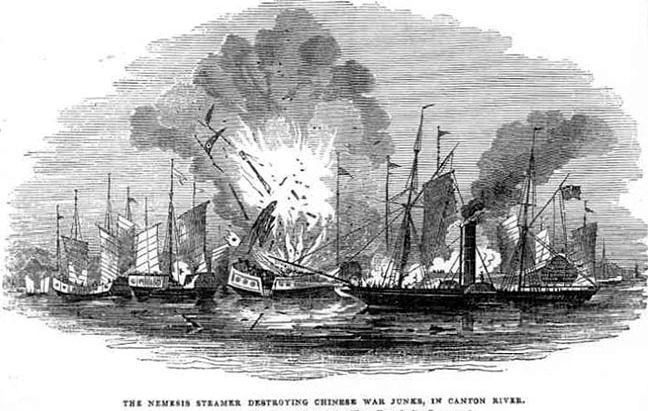 | ||
Nemesis was the first British ocean-going iron warship. Launched in 1839, she was used to great effect in the First Opium War under Captain Richard Collinson and Captain William Hutcheon Hall. The Chinese referred to her as the "devil ship".
Contents
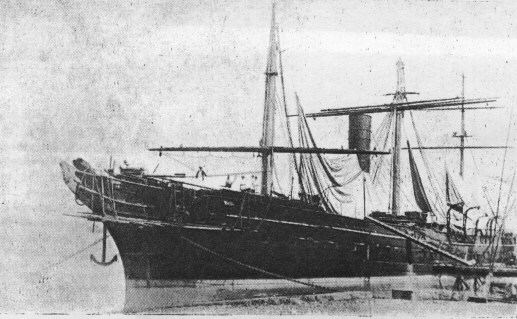
Construction
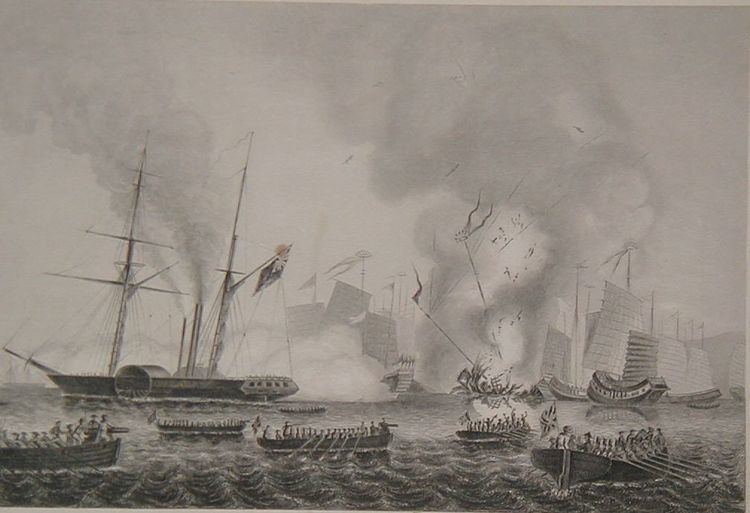
Although commissioned by the Secret Committee of the East India Company (EIC) in 1839, the vessel did not appear in the EIC's list of ships, leading The Times to comment:
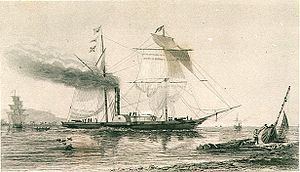
"...this vessel is provided with an Admiralty letter of license or letter of marque. If so, it can only be against the Chinese; and for the purpose of smuggling opium she is admirably adapted."
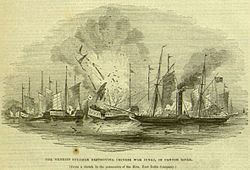
Nemesis was built by British shipbuilding company Birkenhead Iron Works in three months. She had a length of 184 feet (56 m), a beam of 29 feet (8.8 m), a draught of 6 feet (1.8 m), and a burthen of 660 tons. She was powered by two sixty horsepower Forrester engines. She was armed with two pivot-mounted 32-pounder and four 6-pounder guns, and a rocket launcher. The steam- and sail-powered ship was particularly effective in China because her shallow draught allowed her to travel into rivers to pursue and engage other vessels and targets.

Her watertight bulkheads were the first to be used in a warship. They enabled her to survive the hull damage she sustained during sea trials and en route to China in 1840. That year, Nemesis became the first iron ship to sail around the Cape of Good Hope, aided by techniques developed the year before by Sir George Airy, the Astronomer Royal, to adjust a compass for the effect of an iron hull. The adjustments weren't done very well, with the result that the ship's compass performed poorly throughout its career.
China

Nemesis arrived off the coast of China in late 1840, although when she set sail from Liverpool it was publicly intimated that she was bound for Odessa to keep the voyage a secret. A British officer wrote that the outbreak of the First Opium War "was considered an extremely favourable opportunity for testing the advantages or otherwise of iron steam-vessels." She first saw action in the Second Battle of Chuenpi on 7 January 1841 against the Chinese fleet at the Bocca Tigris forts. In the Battle of First Bar (27 February), Nemesis sank Cambridge, an American merchantman that the Chinese had purchased. Due to the shallow draught of the Nemesis, she was able to move through shallow water during the Broadway expedition on 13–15 March and aided in the capture of Canton on 18 March. Based in Chusan, she also saw action at Taisam in February 1842, in a successful skirmish associated with repulse of a much larger Chinese attack on Ningbo.
Later career
After the First Opium War, Nemesis was tasked with the suppression of pirates in Indonesia and the Philippines.
In fiction
James Clavell's novel Tai-Pan refers to a groundbreaking iron ship called Nemesis taking part in the First Opium War. However, the fictionalized vessel is a Royal Navy ship that arrived to assist in the shallow Chinese rivers that would be traversed to gain access to inland China. Flood of Fire, by Amitav Ghosh, contains a brief account of Nemesis in her role during the early battles of the First Opium War.
